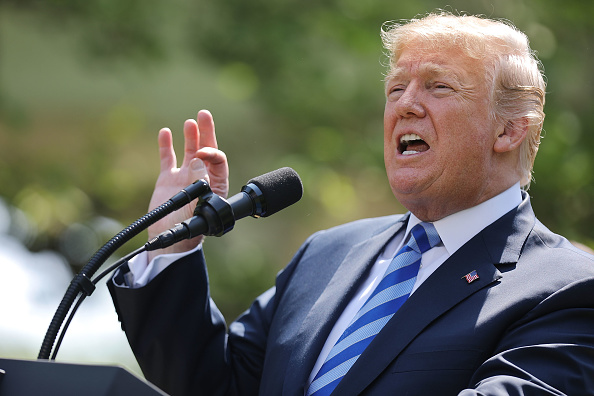
In the next step of the Trump Administration’s effort to inject more transparency into the opaque healthcare system, the White House released a new executive order Monday meant to give the general public more insight into the rates negotiated between hospitals and insurers.
While the order itself is light on specifics, it directs the Department of Health and Human Services to start the rulemaking process to require that providers divulge the prices that patients and insurers pay in a readable format.
Another provision of the order is meant to force hospitals and health plans to inform patients about likely out-of-pocket costs they’ll receive for common healthcare services.
“We believe the American people have the right to know the price of services before they visit the doctor,” President Trump said in a press conference. “More price transparency will mean more competition and the cost of healthcare will go way, way down.”
The order builds on previous efforts by the administration to force hospitals to disclose prices, including a CMS requirement that providers post their chargemaster prices online in a machine-readable format.
While many commentators hailed the move as an important “first step,” critics pointed to the disconnect between hospital list prices and the actual price paid by patients. Other actions by the administration include regulations requiring that drugmakers disclose their list prices in TV ads.

A Deep-dive Into Specialty Pharma
A specialty drug is a class of prescription medications used to treat complex, chronic or rare medical conditions. Although this classification was originally intended to define the treatment of rare, also termed “orphan” diseases, affecting fewer than 200,000 people in the US, more recently, specialty drugs have emerged as the cornerstone of treatment for chronic and complex diseases such as cancer, autoimmune conditions, diabetes, hepatitis C, and HIV/AIDS.
Alongside the price transparency plans, the order also directs officials to develop plans to consolidate quality metrics across federal healthcare programs, open up access to federal de-identified health claims data and broaden the ability for health savings accounts to pay for additional healthcare services.
Administration officials say the new order, which still needs to wend its way through the lengthy bureaucratic rule-making process, would help to lower costs by making healthcare more like other industries.
On a conference call with reporters HHS Secretary Alex Azar positioned the move as helping to arm consumers with the information they need to make more informed decisions about their healthcare.
“The president knows the best way to lower costs in health care is to put patients in control by increasing choice and competition,” he said on the call.
The order has already received strong pushback from both health insurers and hospitals who say that the backdoor negotiations between the two groups should remain secret. Some critics have even said that public disclosure could have the unintended effect of increasing prices.
“If every contract and every negotiated rate were public, no doctor or hospital would want to be paid the lowest rate — they would all be motivated to demand higher payments. And health care costs would rise for all Americans as a result,” America’s Health Insurance Plans CEO Matt Eyles said in a statement responding to price transparency plans.
Azar pushed back on that argument by pointing to fact that negotiated rates are disclosed in the explanation of benefits document provided to patients after a hospital visit.
“Every time one of us goes to a hospital, within a couple of weeks there arrives an explanation of benefits that contains the list price, the negotiated price and your out-of-pocket cost,” Azar said. “This is not some great state secret out there.”
Still, even some supporters of more transparency are skeptical of the policy’s ability to lower general healthcare costs.
“From a consumer protection standpoint, it’s hard to justify a system where patients can’t know in advance what they’re going to have to pay for health care. However, that doesn’t necessarily mean that greater transparency will drive prices down,” Kaiser Family Foundation Senior Vice President Larry tweeted.
Azar pushed back on that argument by pointing to fact that negotiated rates are disclosed in the explanation of benefits document provided to patients after a hospital visit.
“Every time one of us goes to a hospital, within a couple of weeks there arrives an explanation of benefits that contains the list price, the negotiated price and your out-of-pocket cost,” Azar said. “This is not some great state secret out there.”
Still, even some supporters of more transparency are skeptical of the policy’s ability to lower general healthcare costs.
“From a consumer protection standpoint, it’s hard to justify a system where patients can’t know in advance what they’re going to have to pay for health care. However, that doesn’t necessarily mean that greater transparency will drive prices down,” Kaiser Family Foundation Senior Vice President Larry tweeted.
Picture: Chip Somodevilla, Getty Images













